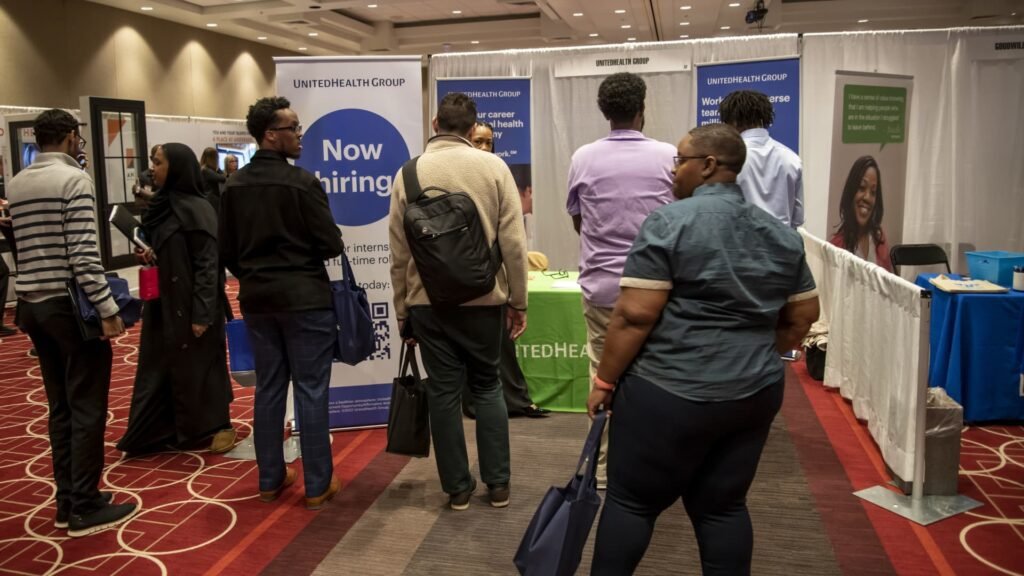
New claims for jobless benefits last week came in lower than expected, offsetting other signs of a weakening labor market.
The Labor Department said Thursday that initial jobless claims this week came in at a seasonally adjusted 233,000, down 17,000 from the previous week’s upwardly revised figure and below the Dow Jones forecast of 240,000.
The report has put Wall Street on edge amid signs that job growth is slowing and a possible recession is closing in. Stock market futures, which had been negative, turned sharply positive after the 8:30 a.m. ET release, and Treasury yields remained elevated.
While the top figures eased concerns, the number of continuing applications, which lags one week, rose to 1.875 million, the highest level since Nov. 27, 2021.
Jobless claims have been rising this year but remain relatively steady. The recent increase has been blamed on disruptions from Hurricane Beryl and summer shutdowns at auto plants. Michigan and Texas saw the biggest declines this week, down 7,401 and 4,814, respectively, in unadjusted figures.
The four-week average rose to 240,750, the highest level in nearly a year. Jobless claims jumped by 14,000 last week, raising concerns that layoffs may be on the rise.
“Jobless claims fell in the most recent week, providing further evidence that weather and seasonal auto plant shutdowns were to blame for the dramatic increase last week,” said Robert Frick, corporate economist at Navy Federal Credit Union. “If you’re looking for further weakness in the labor market, you’ll have to look elsewhere.”
The release of the July nonfarm payrolls report last Friday raised concerns about the state of the labor market after it showed payrolls rose by just 114,000 jobs. At the same time, the unemployment rate rose to 4.3%, triggering the so-called therm rule, which measures changes in the unemployment rate to gauge an economic downturn.
Markets have been extremely volatile since then, with a massive three-day sell-off beginning last Thursday and raising concerns about serious problems for the U.S. economy.
Meanwhile, traders expect the Federal Reserve to start cutting rates in September, with some calling for an emergency cut to counter recent weakness. The market sees an initial cut of half a percentage point as the most likely, with a full percentage point cut by the end of the year, according to CME Group’s FedWatch, a trading system that tracks federal funds futures.



